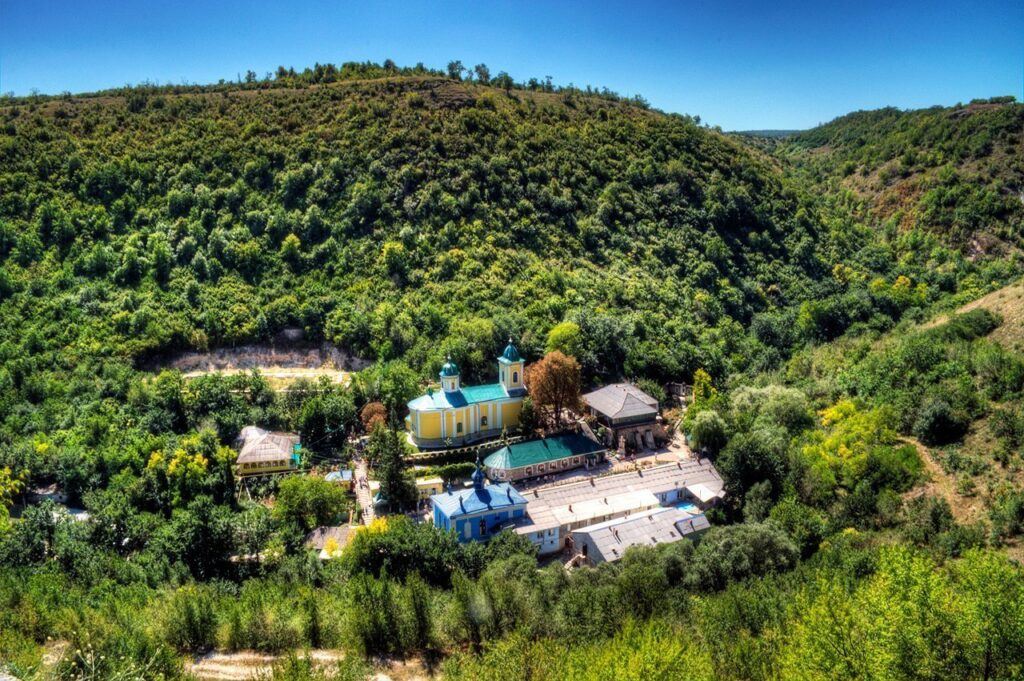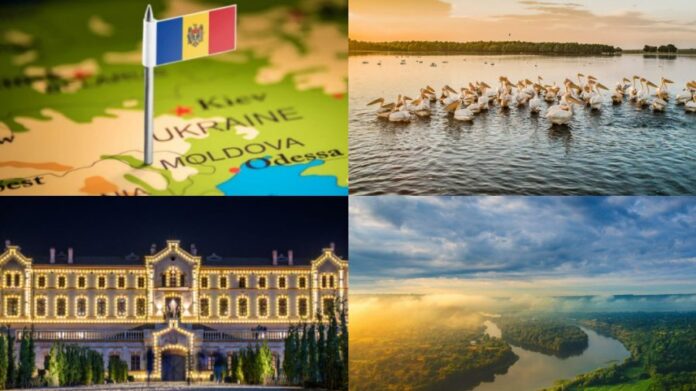The world is full of magical places, whether we’re talking about breathtaking landscapes or fairytale towns. The Maldives, the Grand Canyon in the USA, Cappadocia in Turkey, Positano in Italy, or the picturesque islands of Greece are destinations to include in your ‘must do’ list, but let’s not forget… Moldova is a country that wins everyone with its natural beauty, traditional dishes, incredible wine, and hospitality.
Here, then, are 10 of the most beautiful places in Moldova that are worth seeing.
Cultural-Natural Reserve “Orheiul Vechi”
The Old Orheiul Reserve is located in the eastern part of Moldova, just 60 km from Chisinau, and is that place that transports you back about two thousand years. Apart from the superb view of the Răut River (a tributary of the Nistru), the location also has immense historical/cultural significance.
A museum has been set up there where tourists can learn about the years of yore, from the Tatar and Mongol invasions of the 1st century BC to the Golden Horde period of the 14th century. The stone fortress, which was later destroyed, also dates from those years.
The reserve has a complex relief, where 13 million-year-old geological structures intertwine with Quaternary landscapes ranging from 1.8 million to 8 000 years old.
Here you have something of everything you could wish for caves, ruins, monasteries, thermal baths, and fortifications. The main sights are the Butuceni Monastery (a cave hermitage), the Church of the Assumption of the Virgin Mary, and the remains of the Tatar settlement.
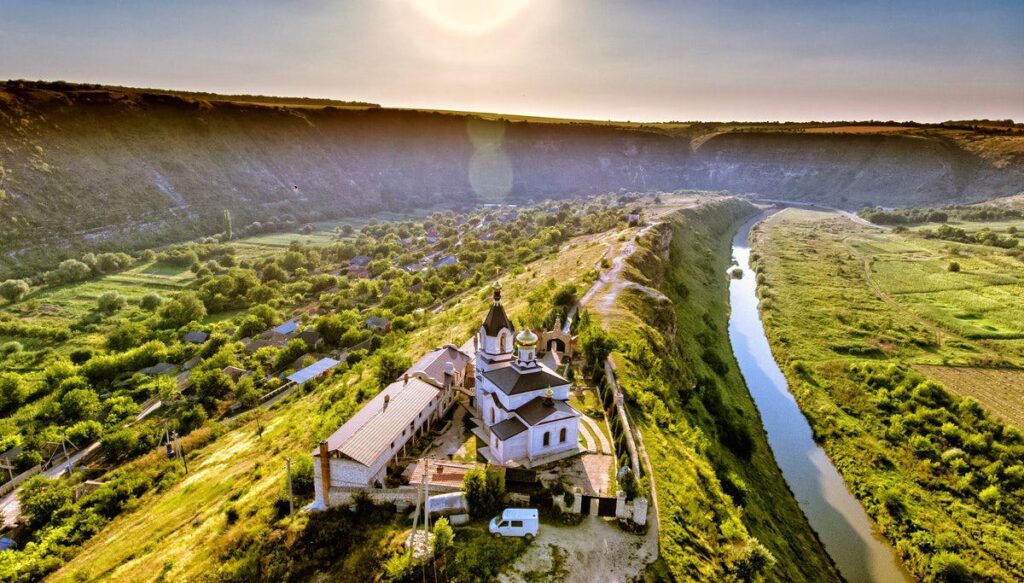
Soroca Fortress
It is located in the middle of Soroca, about 160 km north of Chisinau, and is the visit card of the city of the same name. It’s the place to be if you want to feel the atmosphere of medieval times. The image of Soroca Fortress is on the 20 lei banknote issued by the National Bank of Moldova.
The Soroca Fortress is a 15th-century Moldovan fortress, built in wood by Stephen the Great in front of the Ford over the Dniester and rebuilt in stone by Peter Rares in the mid-16th century. From various sources, it is assumed that a wooden fortress was originally built in Soroca in the first quarter of the 15th century, but the first documentary mention of Soroca appears in 1499. The fortress is circular with a courtyard diameter of 30.5 m with five towers, four circular and one prismatic, which has an entrance passage.
Between 2013 and 2015, the Soroca fortress was restored, as part of a European cross-border project, together with two other “curate” fortresses, Hotin and Suceava, with funds amounting to two million euros. Since 2015, the Soroca Fortress has been open to visitors, and a medieval festival has been held here every year.
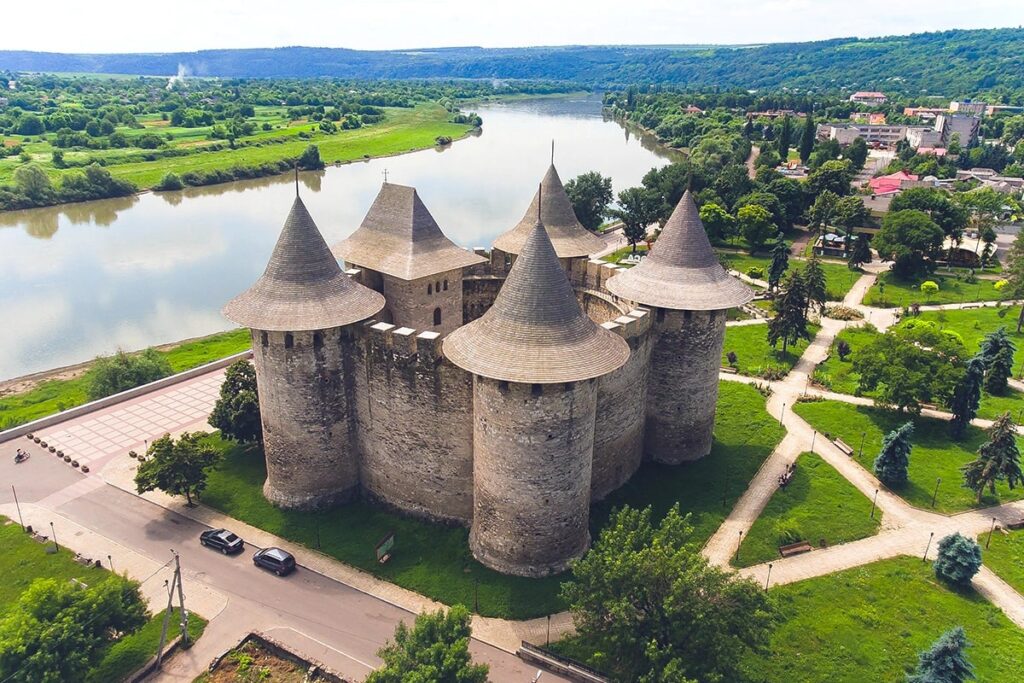
Lower Prut Meadow – Beleu Lake
Those who are interested in nature, birds, water lilies, people, traditions, life stories, gastronomy, and unique destinations can go on a journey through the localities of the Republic of Moldova, located in the Lower Prut Plain. In the southern part of the Republic of Moldova, where the Prut River flows into the Danube, lies the Lower Prut Reserve – from Văleni to Giurgiulești, Cahul district.
According to descopera.MD, near the villages of Slobozia Mare and Văleni, is Beleul, the largest natural lake in the Republic of Moldova. The Lower Prut nature reserve was created on its basis, which is a paradise for waterfowl, fish, animals, and plants, many of which are included in the Red Book of the Republic of Moldova. Beleu Lake is a miniature Danube delta with lots of water and vegetation and has the status of a wetland of international importance. It is linked to the Prut by four gorges, two of which bring water into the lake, and the other two drain back.
The diversity of life and plants here makes you think you’re somewhere in a jungle or wilderness hundreds of miles from civilization. Hundreds of egrets, lizards, crocodiles, cormorants, ducks, lizards, swans, and other birds have populated the surroundings, and the noise they make when you approach lets you know they’re at home. A really special phenomenon is when several thousand pelicans come for 2-3 weeks.
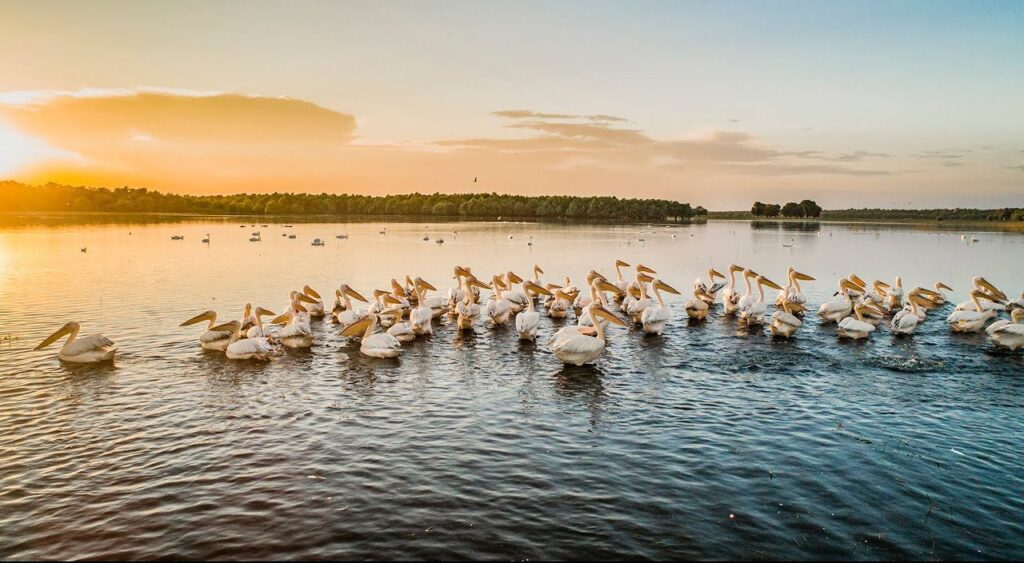
Quarry in the village of Fetești – “Switzerland of Moldova”
The village of Fetești, Edinet district, located in a particularly picturesque area, is rich in limestone deposits, and the abandoned quarry creates landscapes that give the impression of a small Switzerland in Moldova. The 250-meter-wide Fetești gorge shelters numerous caves on its steep, high banks, which are often used by lovers as romantic retreats.
After the collapse of the communist regime and after the stone in the quarry was exhausted, it was abandoned and left to decay over time. Today, visitors can explore the ruins of the quarry. They can watch in amazement as nature has taken over the place.
In the area of the village of Fetești, nature has created a special monument called by scientists the Amphitheatre of Fetești, which surrounds the village of Fetești from the north, west, and east, and has a depth of about 100 m, concentrating the village-like an arena. Nature has created here a 68-ha pass, especially on the left bank of the Draghiște. High, bare rocks, often bare with almost inaccessible caves and caverns, under which the numerous springs flow continuously, winding through the trees and bushes, form a mountainous environment.
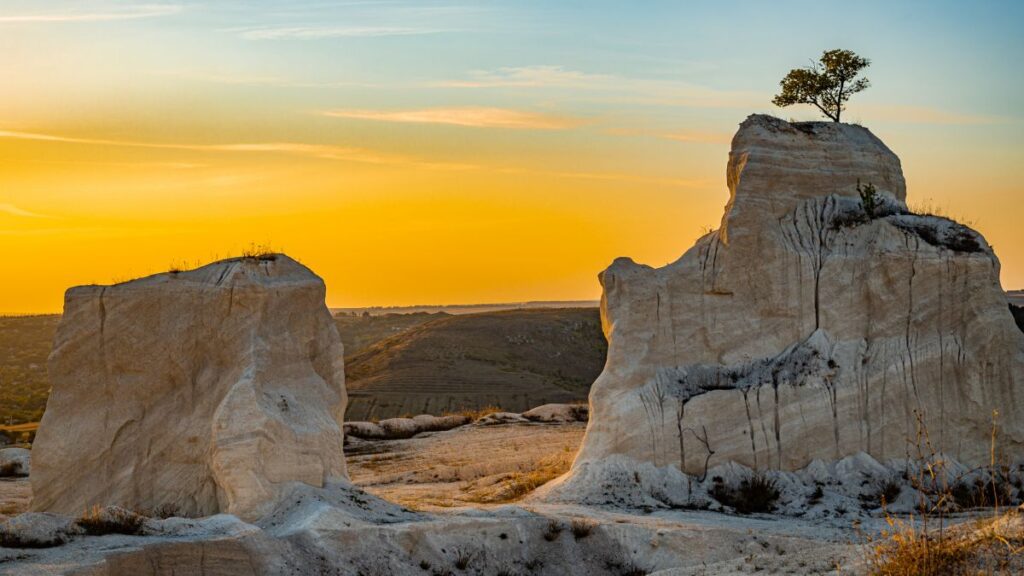
Manuc Bei Manor
Built at the beginning of the 19th century, in 1816, the Manuc Bei Mansion is an architectural monument located in the district of Hincesti in the Republic of Moldova, which has a rich history. The history of Manuc Bei Mansion begins with the merchant and diplomat Manuc-Emmanuel Mîrzoian, an Armenian by nationality, who moved from the Romanian city of Sibiu to Chisinau and bought the Hâncești estate. Even though the mansion was built by his son and grandson, it bears his name. The two built a French-style castle with a winter garden, guard towers, and a huge park.
It took more than three years to build the palace and almost a century to build the whole manor. The manor estate also consists of the hunting castle, the house of the estate manager (the bailiff’s house), servants’ quarters, stables, the summer kitchen, and a church. Unfortunately, the church, which was built in the Armenian style, has not been preserved to this day. The mansion also included a pond and two fountains – one in front of the palace and the second between the palace and the house of Ionita Iamandi. Originally, all the buildings of the estate were connected to the palace by glass galleries. Today, however, the manor includes only a few buildings: Manuc’s Palace, the bailiff’s house, the countess’s building, the hunting castle, and the watchtower.
In recent years, the Manuc Bei Mansion has enjoyed dozens of visitors every day, from all over the country and abroad, and the authorities hope that the monument will become one of the most attractive tourist destinations in the country.

Castel MIMI
The Mimi family mansion (more recently, after the reconstruction, was called Castel MIMI) is an architectural monument of national importance in Bulboaca, Anenii Noi district, built in the late 19th century.
Castel MIMI is proudly listed as one of the 15 most beautiful wineries in the world, largely thanks to its unique range of stunning terraces and evergreen gardens. Our large and diverse outdoor spaces include a town square, summer terraces, spaces for picnics and cooking masterclasses, and a courtyard where large cultural events such as concerts, performances, and outdoor dining take place. The gardens and terraces are open to visitors and are available for hire for private or corporate events.
Another interesting fact: On 1 June 2023, Castel MIMI hosted the European Political Community (EPC) Summit, the largest foreign policy event in our country’s history. The Summit brought together, for the first time, around 50 European presidents, prime ministers, and senior officials. The location was not chosen by chance: Castel MIMI is only 20 minutes away from Chisinau International Airport, but it is also a spacious and well-appointed location, perfect for hosting such large-scale events.
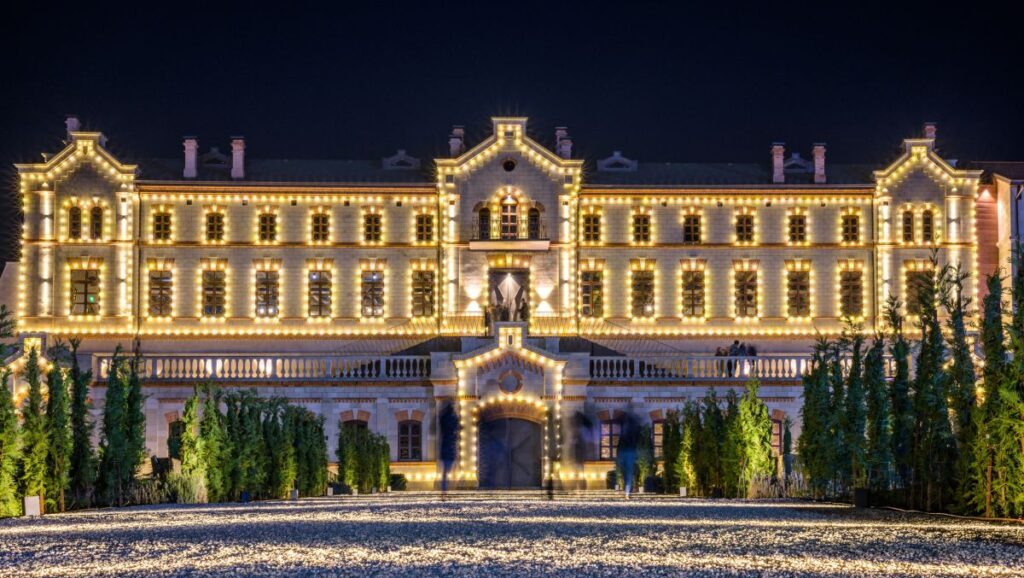
“Stone Epoc” and Branesti Winery
The “Stone Epoc” tourist complex of the Branesti Winery is located in the village of Branesti, Orhei district, in the vicinity of Old Orhei (only 5 km away), 20 km from Orhei, and 50 km from Chisinau. Tourists have the opportunity to discover the underground galleries, taste wine in the specially designed tasting rooms, rent wine casks, participate in cultural events, which are organized in the performance hall of the tourist complex, and experience life in the Stone Epoc. The resort has hotel rooms, a SPA area, and a Stone Epoc restaurant, where there is no access to the internet and telecommunications, so tourists can fully enjoy life in the cave, away from the noise of civilization and everyday worries.
The Brănești winery is located in an old limestone mine, the galleries of which stretch over 75 km and are spread over an area of 75 ha. The entire architecture is built at a depth of 60 meters, which favors a constant temperature of 12-14 degrees all year round and humidity of 90-92%. The natural conditions are complemented by the skill of the people who turn the grapes into a Bahian liqueur. The winery has about 800 ha of vines located in a beautiful forest area on the coast of Old Orhei, but also in the villages of Romanești and Tudora.
The cellars in Branesti produce white and red wines, sparkling, dry, semi-dry, and dessert wines. Particularly appreciated are the vintage wines and wines produced with special technology, such as Madera, Marsala, and pastoral wine. Most of the wine production is exported to China, the USA, Poland, Germany, Romania, Belarus, Kazakhstan, Ukraine, the Baltic States, etc.
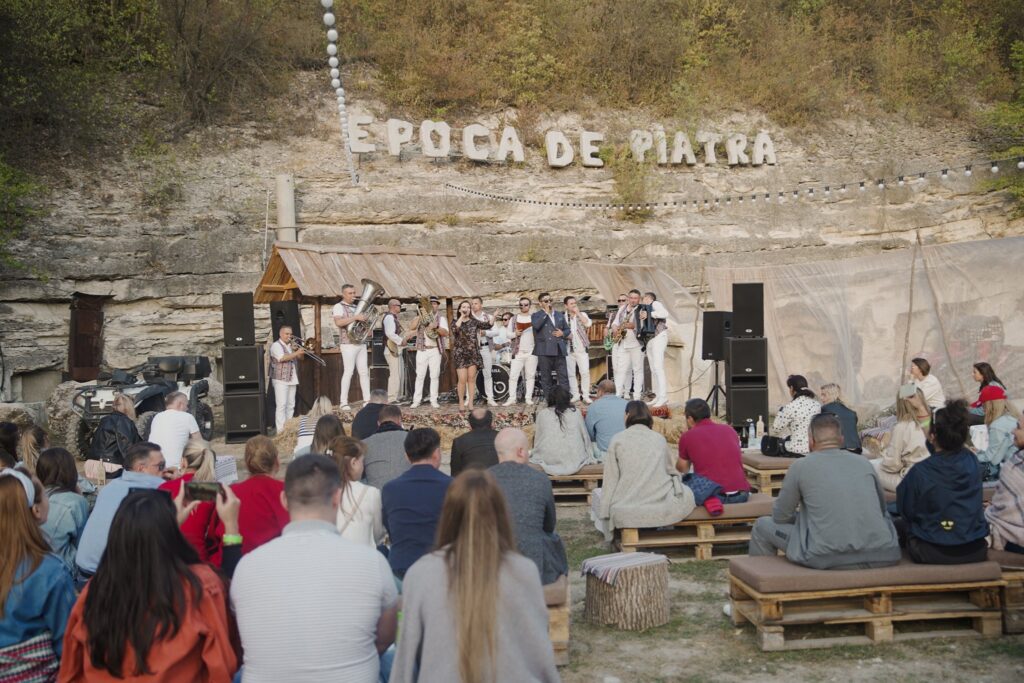
Cricova Winery
The pearl of Moldovan winemaking, “Cricova,” is located in the heart of the Republic of Moldova. At a depth of 60 meters, under the supervision of winemakers, the most excellent Cricova wines are kept and matured. The oldest winemaking traditions have been preserved there, so Cricova is the first company in the country to produce sparkling wine according to the method of the famous monk Pierre Perignon – “Méthode Traditional.”
“Cricova” prides itself on products of the highest quality and its underground labyrinths. The famous cellars house a remarkable collection of wines gathered from all times and all corners of the world. There is a veritable underground city of winemakers, with streets, tasting rooms, warehouses, etc. The underground Cabernet, Feteasca, and Pinot streets are lined with tourist buses accompanied by experienced guides. The total length of the galleries at Cricova exceeds 60 km underground in limestone rocks, with a constant temperature of about +12 °C and humidity of 97-98%. These are ideal conditions for storing more than 30,000,000 liters of branded wines.
Sparkling wines are produced in Cricova in strict compliance with classic French technology. Thus, Cricova has become a visit card of Moldova.
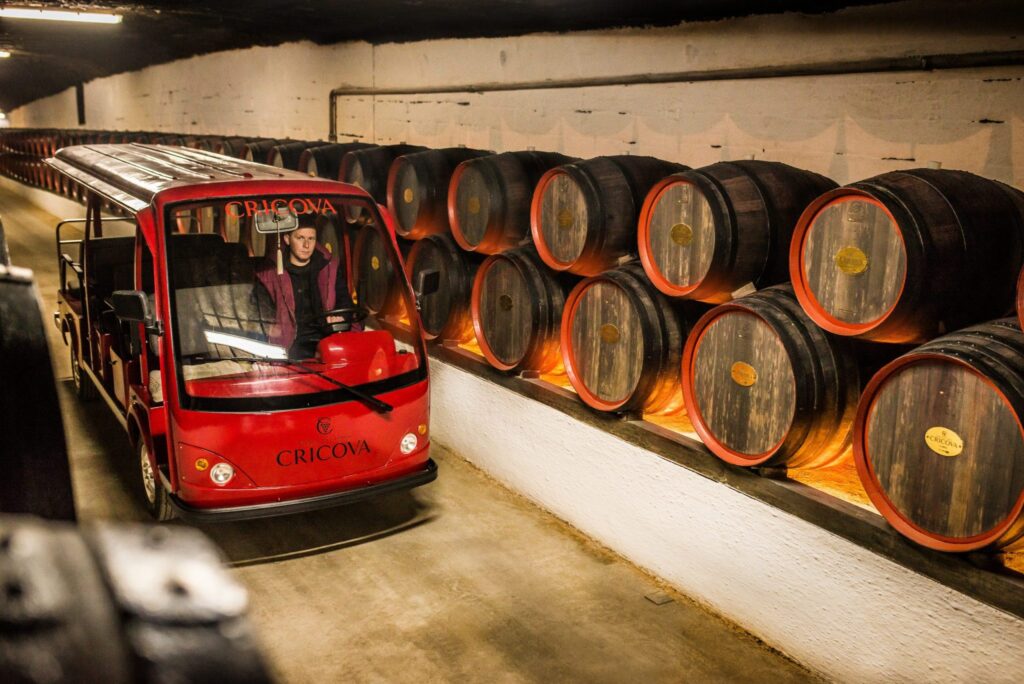
The Domnească Forest
The Domnească Forest is a Nature Reserve in the Republic of Moldova covering an area of more than 5 700 hectares, of which almost 5 000 hectares are covered with forests. The access gate to the reserve is located in Moara Domnească, Glodeni district, 150 km from Chisinau.
The Domnească Forest is the only place where you can admire the bison, the most massive animal in Europe. Visitors can also relax in the shade of 300-400-year-old oak trees. The Zimbera is the most visited place in the Dome Forest. The destination is about two kilometers from the gate to the protected area. A visit to the Gymboree costs 50 lei/mature and 30 lei/child.
On the territory of the Domnești Forest, there is also the guesthouse “La Fontal,” where you can stay overnight. Also, if you come to the Domnești Forest, don’t miss the chance to visit the natural museum “Suta de Movile.”
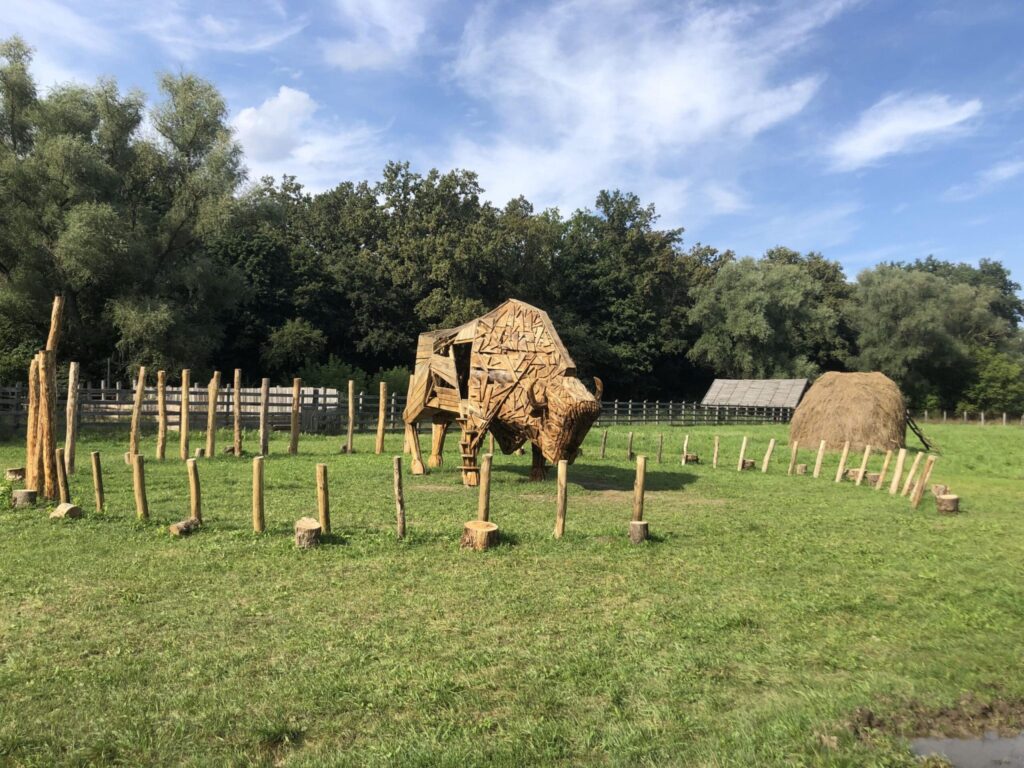
Saharna Monastery
The Republic of Moldova has a lot of monasteries that are of rare beauty. An example is the Saharna Monastery and Waterfalls, a place appreciated by both foreign and Moldovan tourists.
The “Holy Trinity” monastery at Saharna, located about 110 km from Chisinau on the right bank of the Nistru River, is rightly considered one of the largest religious pilgrimage centers in Moldova. Here you can find the only relics of St. Macarie in the republic, and on one of the rocks – the imprint left by the Mother of God, according to a legend. It is said that one day a monk from the old rock monastery (according to documentary evidence from the 17th century) was killed by a monk. XVII-XVIII, the monastery has been in operation since the 17th century. X-XII) on one of the high cliffs here, the illuminated image of the Mother of God appeared to him. On reaching the rock, the monks discovered a footprint on the stone, a sign they considered a divine sign and a testimony to the ‘divine purity’ of the place.
From above, from the cliffs of Saharna, some exceptional landscapes open up: the rocky and wooded gorge of the Saharna river (16 km long). It flows over 30 gorges and waterfalls along its course. There is also an important archaeological site with remains from the Iron Age (10th-8th century BC) and a Geto-Dacian fortress (4th-3rd century BC), one of the best preserved in the Republic of Moldova.
